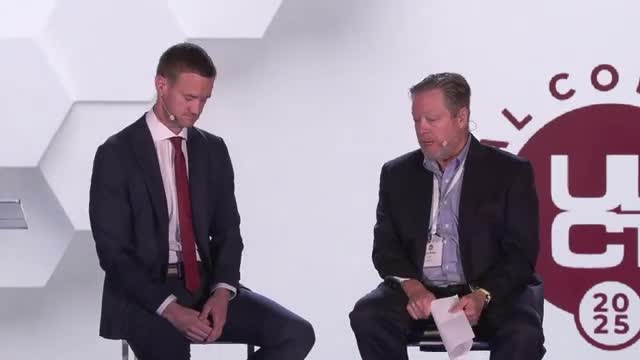Representative: transit investment must pair with station-area planning to keep systems viable
October 30, 2025 | Utah League of Cities and Towns, Utah Lobbyist / NGO, Utah Legislative Branch, Utah
This article was created by AI summarizing key points discussed. AI makes mistakes, so for full details and context, please refer to the video of the full meeting. Please report any errors so we can fix them. Report an error »

Representative Calvin Roberts said Utah has an "incredible backbone transit system" but warned that continued investment will underperform unless land use around stations and corridors supports ridership.
"If transit in the state is gonna work, it's got to be combined with good land use and planning policy," Roberts said. He noted the state invested about $500,000,000 in double-tracking FrontRunner, which he said will reduce wait times and increase frequency (he described moving from 30-minute waits to 15-minute waits as an example of frequency gains).
Roberts urged coordination between state investments and local station-area plans. He described the planning approach as focusing on "stations or nodes and corridors" and said success depends on matching transit infrastructure with development that generates riders. "If the state is going to invest more in transit ... we've got to have the land use policy supporting that use," he said.
The mayor described Draper's experience: the city completed three station-area plans in the year, including one around City Hall with higher-density outcomes and a second (Gimbles Lane) planned at about 25'27 units per acre targeted at townhomes and condominiums for owner-occupiers. The mayor and Roberts discussed a figure of about 48,000 units planned or entitled through station-area planning in the referenced zone ("Zone 4").
Roberts acknowledged local challenges where station locations are in older, lower-density neighborhoods and said station-area planning must preserve local control while providing strategic direction about development around stations, including consideration of BRT and other modes.
Roberts warned of a cycle of disinvestment if land use and investment are not aligned: lower ridership leads to lower investment, which further reduces ridership. The discussion did not include new funding commitments or votes.
"If transit in the state is gonna work, it's got to be combined with good land use and planning policy," Roberts said. He noted the state invested about $500,000,000 in double-tracking FrontRunner, which he said will reduce wait times and increase frequency (he described moving from 30-minute waits to 15-minute waits as an example of frequency gains).
Roberts urged coordination between state investments and local station-area plans. He described the planning approach as focusing on "stations or nodes and corridors" and said success depends on matching transit infrastructure with development that generates riders. "If the state is going to invest more in transit ... we've got to have the land use policy supporting that use," he said.
The mayor described Draper's experience: the city completed three station-area plans in the year, including one around City Hall with higher-density outcomes and a second (Gimbles Lane) planned at about 25'27 units per acre targeted at townhomes and condominiums for owner-occupiers. The mayor and Roberts discussed a figure of about 48,000 units planned or entitled through station-area planning in the referenced zone ("Zone 4").
Roberts acknowledged local challenges where station locations are in older, lower-density neighborhoods and said station-area planning must preserve local control while providing strategic direction about development around stations, including consideration of BRT and other modes.
Roberts warned of a cycle of disinvestment if land use and investment are not aligned: lower ridership leads to lower investment, which further reduces ridership. The discussion did not include new funding commitments or votes.
Don't Miss a Word: See the Full Meeting!
Go beyond summaries. Unlock every video, transcript, and key insight with a Founder Membership.
✓
Get instant access to full meeting videos
✓
Search and clip any phrase from complete transcripts
✓
Receive AI-powered summaries & custom alerts
✓
Enjoy lifetime, unrestricted access to government data
30-day money-back guarantee


